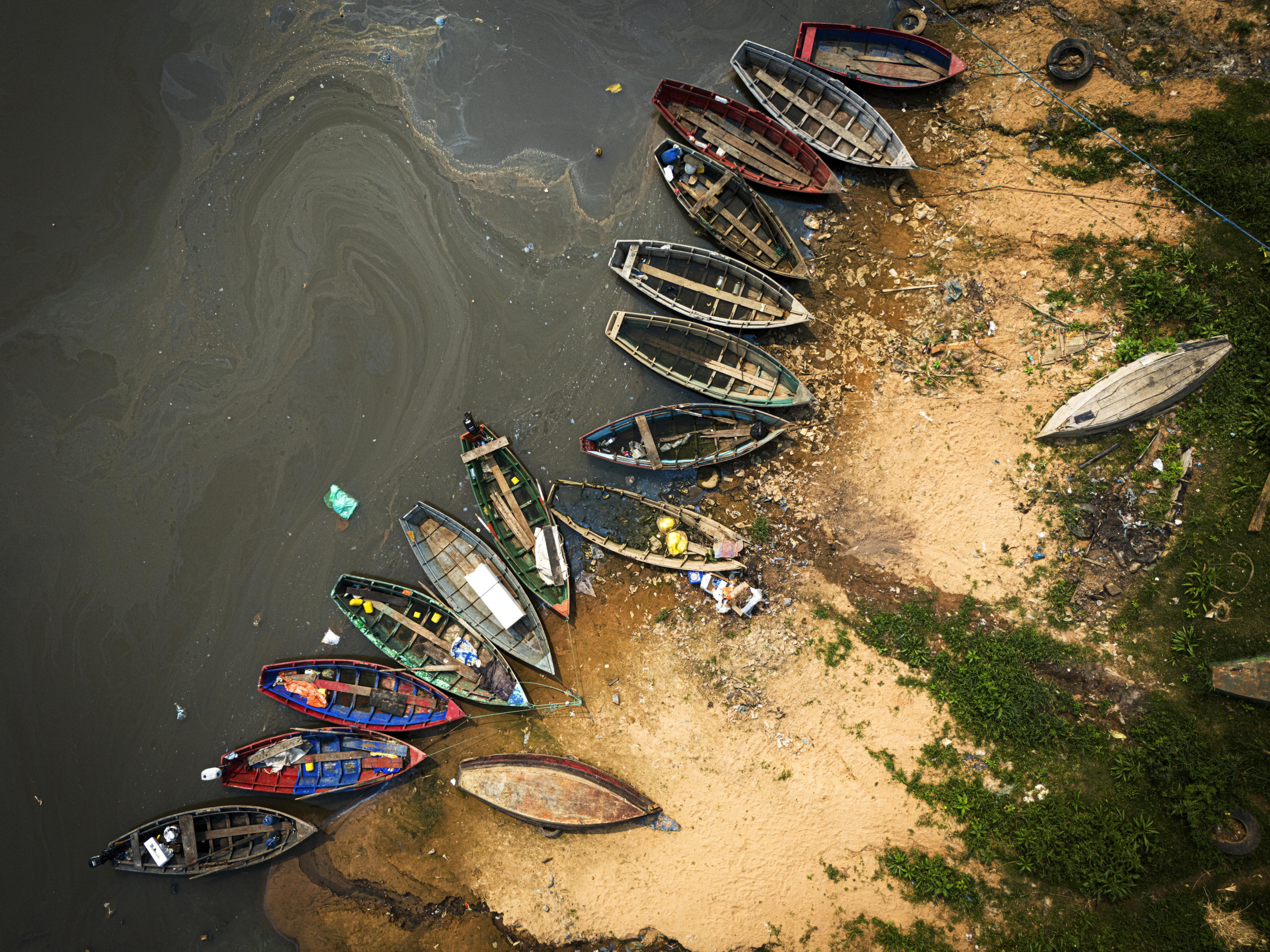The Paraguay River has reached its lowest water levels in over a century, primarily due to an ongoing drought in the Amazon rainforest.
These water levels have dropped 35 inches below normal at the port of Asunción, the capital, marking a significant historical low.
For landlocked Paraguay, which exports a substantial amount of agricultural products, this is crucial as the river is responsible for about 80% of its international trade including grains, corn, and soy.

Jorge Saenz/AP
The impact has been severe; around 1,600 fishermen have lost their jobs, and many boats are currently stranded on dry land.
“I have no way out,” shared Fermín Giménez, a sailor whose barge is now stuck as the river recedes. “It’s a disaster.”
Experts note that this year surpasses the previous record low set in October 2021, indicating that such droughts are becoming increasingly frequent and severe.
Not only has the Paraguay River been hit hard, but the Madeira River, a significant tributary of the Amazon, has also seen record lows, exacerbating the situation for shipping throughout the region.
Shipping disruptions have been widespread, with more than half of the river’s shipping capacity affected, leading to delays and complications for transports, including Brazil’s iron ore exports and Bolivia’s fuel shipments, which must be rerouted overland.
Additionally, Paraguay is at risk of electricity supply cuts as the river is a key resource for power generation, further compounding the economic strain.
Industry experts predict potential losses in the hundreds of millions. “Our main concern is whether this will be the new normal. Recovery doesn’t seem imminent,” noted Raúl Valdez, president of the Center of River and Maritime Shipowners.
These low levels are attributed to various factors such as climate change, increased population pressure, and poor governance in managing water resources.
As Rachael McDonnell, deputy director-general at the International Water Management Institute, pointed out, droughts are becoming longer and harder to recover from due to climate shifts.
In addition to the drought, parts of northeast Paraguay and Bolivia are grappling with wildfires, raising further environmental alarms.
This article incorporates reporting from The Associated Press.
